
The plants you have received are ready for immediate planting. If they are not planted right away, please keep them in a shady area and make sure they do not dry out. Don't keep them waiting for more than a few hours after unboxing. Unwrap carefully. Avoid breaking tender, new shoots.
Bamboo Planting Instructions
Direct Soil Planting Instructions
-
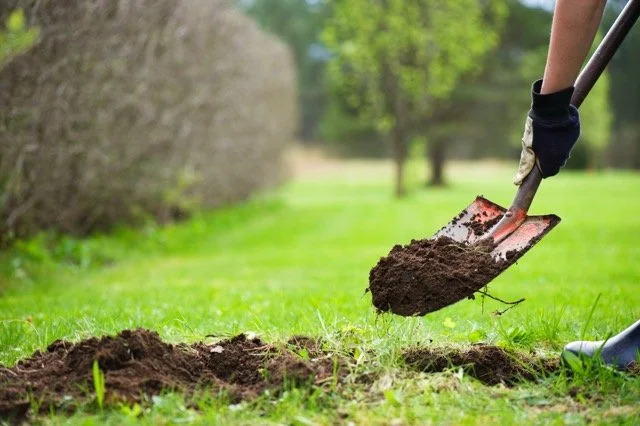
Step 1: Digging the Hole
Dig a hole as deep as the container and twice as wide.
-
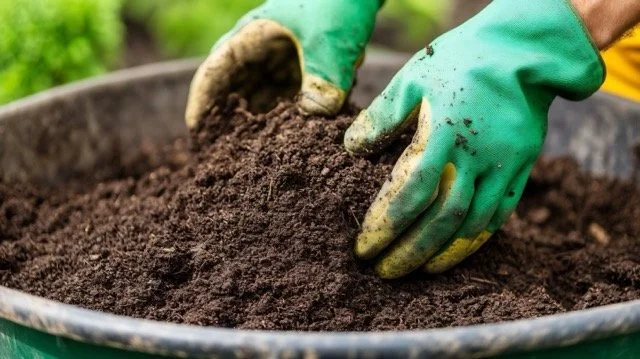
Step 2: Mixing Soil
Mix compost with the excavated dirt at a one to one ratio. Discard the excess dirt.
WARNING: DO NOT USE STEER MANURE OR FRESH MANURE IN THE PLANTING HOLE!
-

Step 3: Carefully Remove
Carefully remove the bamboo plant from the container. Be careful with new emerging bamboo shoots, these are very tender.
-
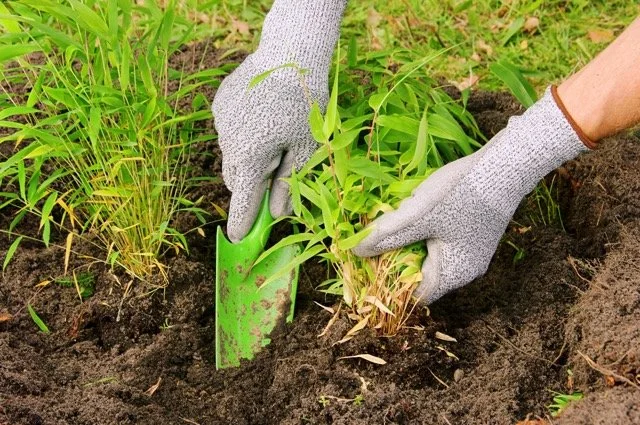
Step 4: Place in Hole
Place the plant in the hole so that the soil levels match at the top. Back fill the hole and tamp the dirt/compost mix tightly between the root ball and the sides of the hole.
-

Step 5: Watering
Build a 'donut' shaped depression around the plant and water until deeply soaked.
-

Step 6: Maintenance
It is important to make sure the bamboo does not dry out during the first summer after planting. The signs of drying out are apparent when the bamboo leaves roll up like cigarette papers and become very narrow looking. A 3-4" mulch of wood chips, bark, or hay is desirable.
Container Planting Instructions
-

Container Size
Use container large enough to have a space at least two inches between the edge of the root ball and the side of the container. Squatty tub like containers are better than tall deep ones.
-
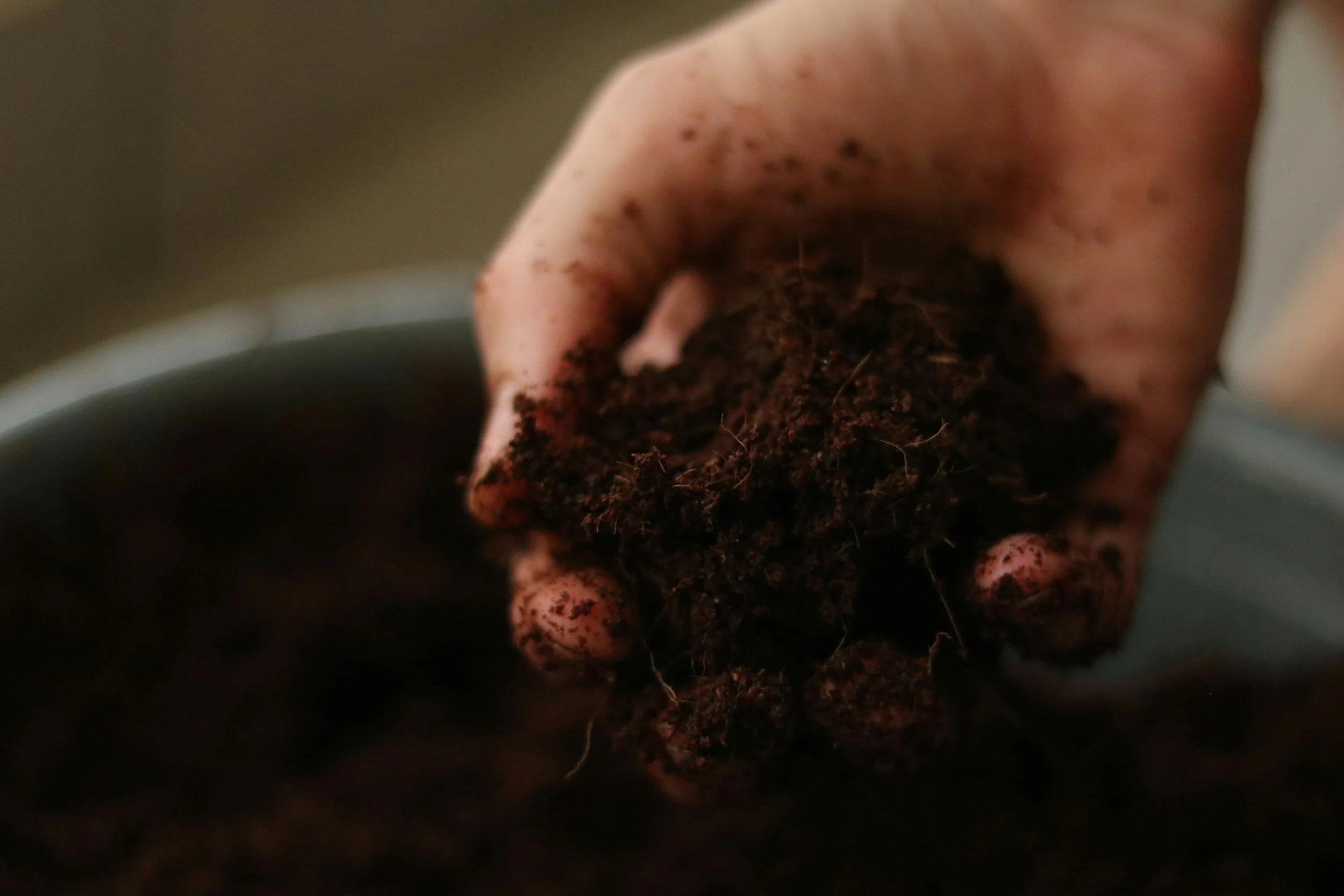
Fertilizer
Fertilizing the bamboo is simple. Mix a slow release fertilizer like Osmocote 28-14-14 into the soil. If this is not available a soluble fertilizer such as Miracle Grow will do quite nicely. Another method is to use lawn fertilizer. Of course bamboo just loves a top dressing of manure, just don't over doo it! The rule of thumb is to use high nitrogen fertilizers for Spring and Summer and then go to a high phosphorus and potassium and lower the nitrogen for the Fall.
-

Pruning & Grooming
The key to keeping the bamboo beautiful is in how one prunes and grooms. Remember that the bamboo culms (canes) are one of its attributes. Other than the dwarf species, the culms should be exposed for admiration. The older culms need to be thinned out each year and the spaces between them kept even and open.
-
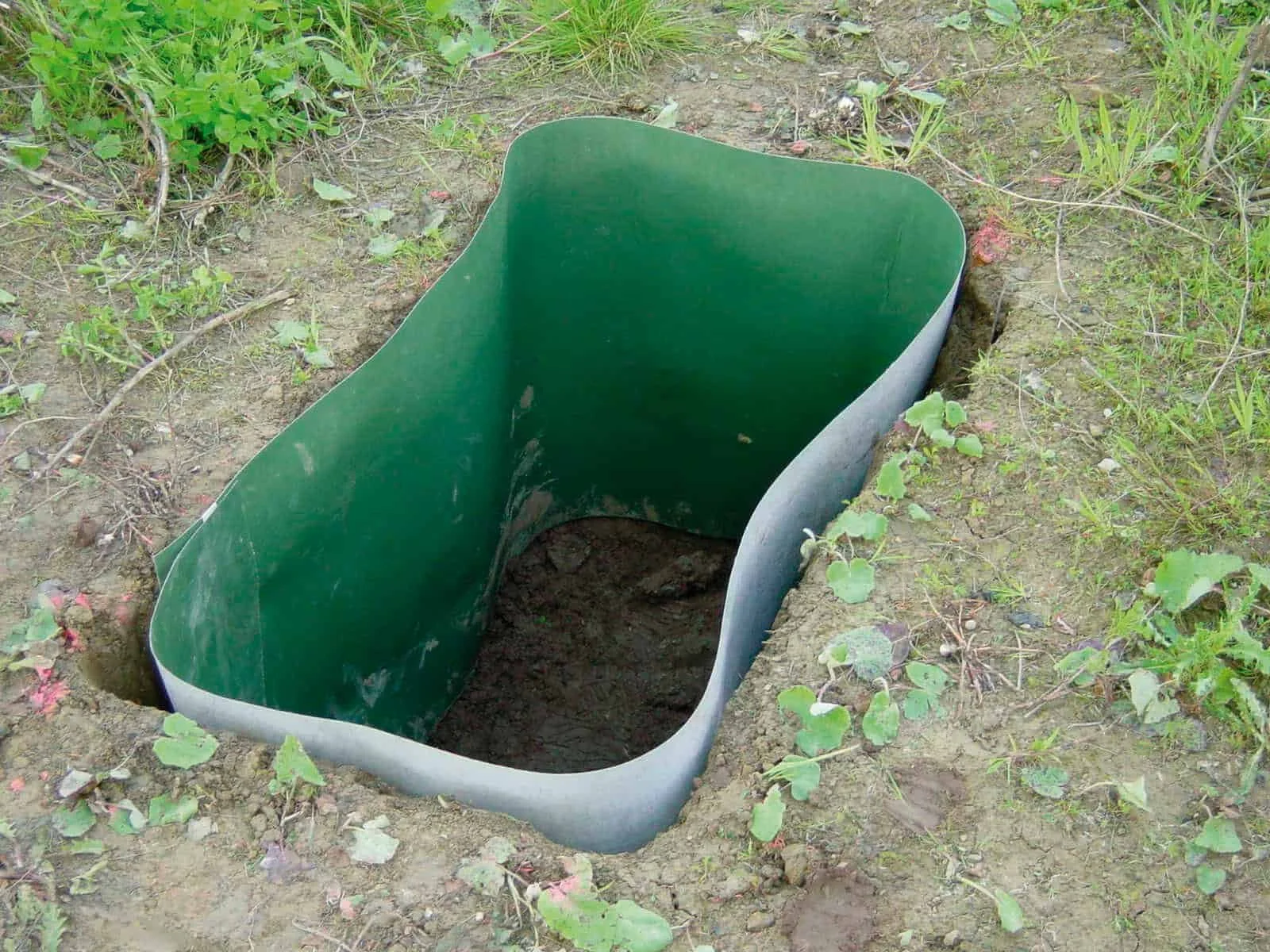
Root Barrier
The running bamboos are spreaders.
These species need room to grow. Don't plant them in tiny spaces unless a root barrier is installed. A 25' X 25' space is necessary to allow for free growth. Our root barrier is installed by trenching a perimeter 30" deep around the planting area and then placing on vertical edge our 40 mil. plastic barrier. Try to only have one seam. The seam is pop riveted, taped, or bolted shut. If the trenching seems excessive it is recommended to rent a Ditch Witch type trencher to do the job. -

Watering Tips
If the climate is dry in the Summer, an effective barrier can be accomplished through drip irrigation and watering only the center of the plant.
-

Spacing Plants
Space dwarf bamboos 3' apart, shrub size 6', tall shrub sizes 10' and timber sizes 15' to 25' apart. Good luck and ichi-ban bamboo growing!
How to Tame Running Bamboo
-
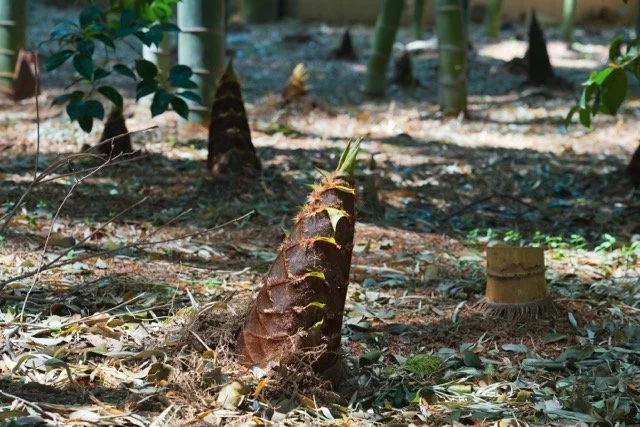
Step 1: Understand the Rhizome Growth
Running bamboo spreads by underground rhizomes that grow just beneath the surface.
New shoots emerge from these rhizomes in the spring or summer, depending on the species.
Expect rhizome growth once per year, usually in late summer or fall.
-

Step 2: Plan for Containment
Choose a location where you can either install a barrier or easily prune rhizomes. Avoid planting close to property lines or invasive-sensitive areas without control measures in place.
-

Step 3: Install a Rhizome Barrier (Optional but Recommended)
Use a high-density polyethylene (HDPE) barrier, at least 24–30 inches deep.
Angle the barrier outward slightly at the top to redirect rhizomes upward, making them easier to spot.
Leave 2 inches of the barrier above ground to prevent rhizomes from growing over it.
Check edges regularly.
-
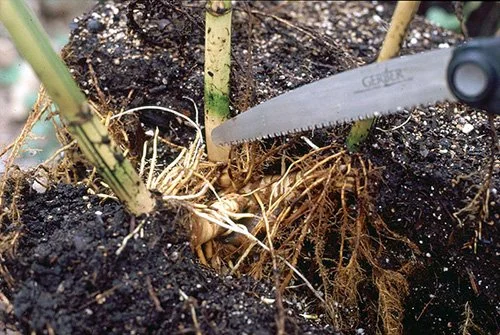
Step 4: Practice Rhizome Pruning (Annual Maintenance)
If you're not using a barrier, or even if you are, pruning is key:
1. Wait until late fall (after rhizome growth slows).
2. Use a sharp spade or rhizome cutter to slice around the perimeter of your bamboo grove.
3. Dig down about 12 inches deep in a circle or trench surrounding the plant.
4. Sever any spreading rhizomes — you’ll feel them with your spade or see their root-like structure.
5. Remove and discard severed rhizomes to prevent re-rooting.
-
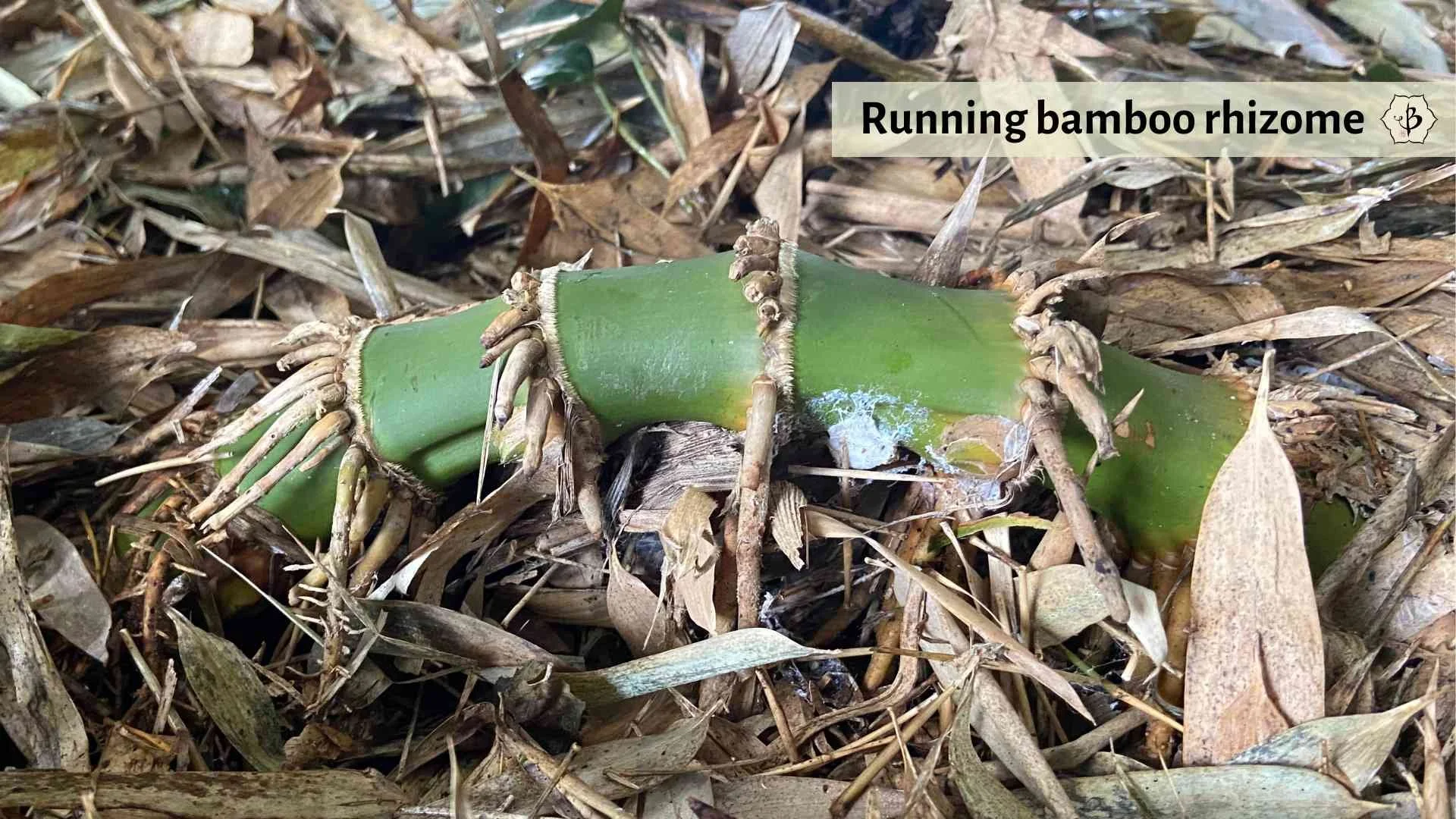
Step 5: Monitor and Repeat Annually
Recheck each year, ideally in late summer or early fall.
Watch for any rogue shoots emerging outside the desired area and remove them immediately.
-
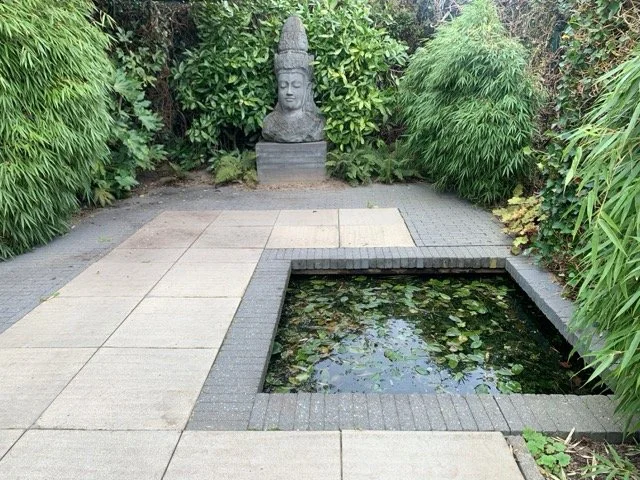
Bonus Tip: Use Physical Edges Wisely
Mowable edges, patios, or sidewalks can help limit rhizome spread naturally.
Bamboo tends to avoid extremely dry, compacted, or heavily trafficked areas.
Keep Exploring
The World of Bamboo

Bamboo Resources
Looking to dive deeper into the world of bamboo? Visit our Bamboo Resources page for expert articles, regional growing guides, and species highlights—including writings by longtime bamboo specialist Gib Cooper. Whether you're exploring bamboo for the Pacific Northwest, researching forage uses, or curious about the genus Chusquea, our resource library offers valuable insight to help you grow with confidence.

